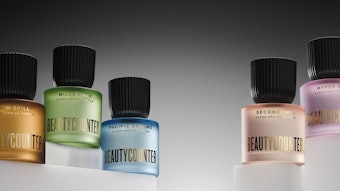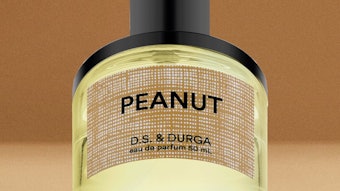In the not too distant past, home air care was pretty much synonymous with masking odors. If the house smelled bad, consumers reached for a spray or lit a candle. Scented candles also were mainstays of holiday décor, but it’s likely that most consumers thought more about blowing out tiny flames on a cake than enhancing their environment when they thought of candles. Though this may be a bit of an overgeneralization, it’s also a safe generalization when one thinks in terms of dollars. Today’s air care market is huge—and continues to grow.
According to Euromonitor International, the global air care market has been the most dynamic sector in the household care arena since 2001. Revenues from air care products have increased by nearly 30% over that same period—reaching $6.4 billion in 2005. Euromonitor anticipates the global air care market to grow to $7.2 billion annually by 2010.
And it’s not the desire to cover up all that assaults our olfactory sense that is driving the growth.
A recent poll conducted by the Sense of Smell Institute—The Fragrance Foundation’s research and education division—sought to answer why fragrances are used in homes. Thirty-seven percent of respondents stated that the purpose was to make their home smell “warm and inviting;” 26% use home fragrances to create a relaxing mood.
In fact, Euromonitor cites the growth of the air care market to consumers’ changing attitudes toward the home environment and new product developments. Consumers are taking action to create a more relaxing and welcoming home environment through home fragrances.
That change in attitude may have been a long time coming. Yankee Candle founder Mike Kittredge created his first candle in 1969 as a Christmas present for his mother, and now the company posts quarterly earnings of approximately $15 million. The company recently was purchased for $1.4 billion in cash. That’s a long way from melted crayons and concocting homemade scents, and illustrates the potential for products intended for home fragrancing.
In addition to candles, fragrance has been delivered through other time-tested methods (such as incense, oils and potpourris) and some seemingly novel methods—lamp rings and reeds. However, Euromonitor projects growth to be driven primarily by sprays and electric devices. North American sales of electric devices have grown by 38% throughout the past two years, and spray fresheners generated revenues of $1.8 billion in 2005.
The large markets are demanding flexibility and control with fragrance delivery and sophisticated sprays that deliver fragrances that last longer than standard aerosols. While scents grow in complexity and companies such as CPL Aromas and International Flavors & Fragrances continuously formulate air care-specific scents that keep pace with changing consumer tastes, better and innovative delivery systems likely will determine which products will succeed.
SC Johnson demonstrated the sophistication required to set a delivery system apart in a competitive field. The company’s Glade Wisp Home Fragrancer is a battery powered device with a microchip that automatically releases a puff of fragrance into a room. The device achieves five things above and beyond releasing fragrance into the air. It allows consumers to control the amount of fragrance delivered, it’s automatic, it’s portable, it offers consistency and the puff reassures consumers that the device is working. The company answered a question—“How do we continue to compete in delivering home fragrances in a growing and crowded market?”—by looking beyond the fragrance and the delivery. As Euromonitor notes, manufacturers and marketers need to concentrate on developing value-added features for products in markets at or near volume maturity to drive revenue growth.
That’s not to say that creating better sensory experience through scent and its delivery will not lead to success. ScentAir Technologies’ patented scent delivery systems were originally developed by a former Lockheed Martin scientist for Walt Disney attractions and special events. The company moved on to retail devices that utilized the sense of smell to craft brand messages, which then moved to hotel lobbies to brand that experience. The company now is creating an affordable home program based on its commercial system, stating that it believes consumers desire a “truly impactful fragrance experience in their home.”
It is interesting to note, however, that a company invested and experienced in the impact of fragrances does not settle for a home product that simply delivers fragrance. The device allows consumers to control the fragrance intensity and duration, and a motion detector turns the system on when someone enters the room. And that’s inviting.










